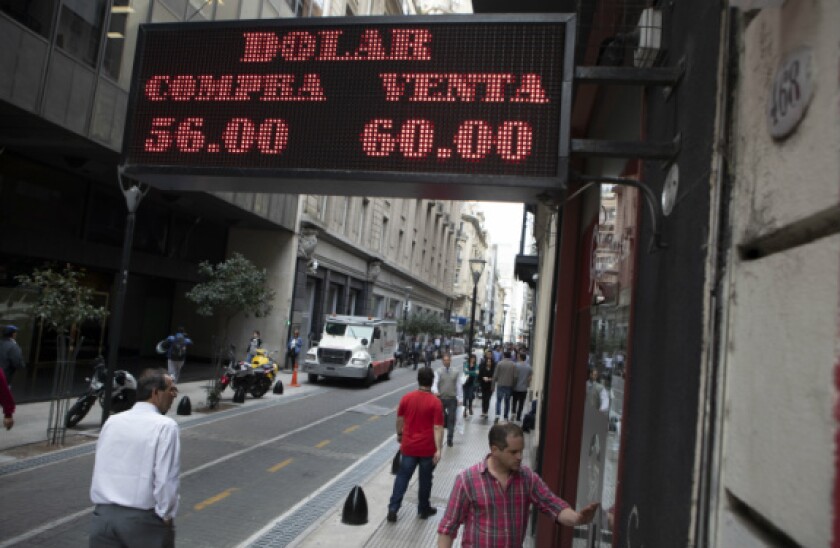Early on, the signs were not good for president Alberto Fernández’s relationship with the bond market. Weeks of speculation surrounding who would be his finance minister became a saga, and for the appointment of Martín Guzmán to come so late in the day suggested to some that the new administration would not take its debt problem seriously.
Then Axel Kicillof, governor of the Province of Buenos Aires and something of a comedy villain for bond investors who remember him from his 2013-2015 stint as finance minister, made some forthright statements about not having the funds to make a $250m amortisation payment. Bond prices plunged, and a request to bondholders to allow a delay to the payment followed.
No doubt, some in the markets will have enjoyed Kicillof’s retreat last week as he eventually stumped up the funds to avoid default, with one major creditor stubbornly refusing to negotiate.
Of course, the fact the province could not arrange to delay one small payment in the space of three weeks suggests that the very detailed timeline for the sovereign restructuring, published on the finance ministry’s website, is far-fetched, to say the least. This would see the entirety of Argentina’s external bond curve restructured by March 31.
Mock all you want, but this is far preferable to the mysterious, hostile way in which investor relations were conducted on both sides during the 15-year odyssey of Argentina’s previous default.
Moreover, Kicillof’s red face suggests that Argentina’s administration not only understands the importance of a swift debt restructuring, but that it is willing to spend political capital to achieve it. As much as a provincial default would have been a negative, it is unlikely that it would have derailed the sovereign negotiations — the amount was comparatively tiny and there is no cross-default clause.
With this payment the government is sending a clear message to bondholders about its objectives: it has a genuine interest in keeping relations cordial.
Similarly, with the proposed restructuring timeline — even including deadlines for the hiring of various advisors — Guzmán is taking a political risk, asking markets and the electorate to keep him accountable for the process.
Investors tend to respond well to issuers with a clear set of priorities — it enables them to analyse the credit as an investable asset, rather than sit around conjuring up worst-case scenarios. By taking such a proactive stance, Guzmán is shortening the time bondholders have to do this.
This defined timeline also gives the impression that the government knows what it wants. And previous president Mauricio Mauricio’s “market-friendly” administration proved that bond markets do warm to good intentions, even when the economic reality is dire.
How else can you explain why, in the middle of a deep recession, unable to control eye-watering inflation rates, and with only marginal fiscal improvements, Macri’s government was able to raise tens of billions of international bonds in just two years?
Finally, although bondholders are unlikely to see eye-to-eye with the government on several issues, it is in their interests to take the government’s attitude seriously.
If the March deadline does indeed look ambitious, it injects urgency into the matter and gives the government a chance of wrapping up the process as quickly as possible.
The sooner Argentina’s debt situation is resolved, the sooner the economy can return to some form of normality, and the higher the value of Argentine debt in the long term.

